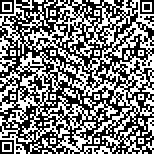|
|
| |
|
|
| 本文已被:浏览 617次 下载 393次 |

码上扫一扫! |
| 施氮量对新疆滴灌冬小麦冠层结构及其小气候特征的影响 |
|
雷钧杰1,2,3, 张永强2,3, 陈兴武2,3, 赛力汗·赛1,2,3, 薛丽华2,3, 范贵强2, 王志敏1
|
|
|
| (1.中国农业大学 农学院, 北京 100193;2.新疆农业科学院 粮食作物研究所, 乌鲁木齐 830091;3.农业部荒漠绿洲作物生理生态与耕作重点实验室, 乌鲁木齐 830091) |
|
| 摘要: |
| 为明确不同施氮量对新疆冬小麦冠层结构特征及其群体内部光、温变化的影响,于2013-2015年连续2个冬小麦生长周期,在大田滴灌条件下,采用单因素随机区组试验设计,共设置了0(N0),94.5(N1),180(N2),240(N3),300(N4)和360 kg/hm2(N5)6个施氮肥处理,研究了施氮量对冬小麦茎型特征,叶垂直分布及其形态特征,冠层光、温变化规律的影响。结果表明:与N0处理相比,增施氮肥冬小麦叶片的长、宽及叶片总面积均显著增加。随着施氮量的增加,各叶层LAI、各节间长度和节间粗度均呈"先增后减"的趋势,株高变幅为71.83~85.88 cm(2014年)和70.56~85.18 cm(2015年);冠层中、下部的透光率和冠层温度均呈"先降后增"的趋势。各处理冠层温度日变化呈"凸"型曲线,均在15:00左右达到峰值,其值以N3处理最低。2年试验产量均以N3处理最高,为8 653.22(2013年)和8 415.20 kg/hm2(2014年),分别较同年N0、N1、N2、N4和N5处理增产68.01%、32.39%、17.92%、5.34%、10.69%和67.39%、30.81%、19.31%、4.20%、11.49%。本试验条件下,施氮量控制在240 kg/hm2左右,滴灌冬小麦叶型、株型特征良好,冠层光、温适宜,有利于获得高产。 |
| 关键词: 滴灌 冬小麦 施氮量 冠层结构 小气候 |
| DOI:10.11841/j.issn.1007-4333.2017.10.01 |
| 投稿时间:2016-09-28 |
| 基金项目:自治区公益性科研院所基本科研业务经费资助项目(KY2015002;KY2013058);新疆维吾尔自治区自然科学基金面上项目(2014211A028);自治区重点研发计划项目(2016B01002-3);国家自然科学基金项目(31660370);国家小麦产业技术体系(CARS-3) |
|
| Effects of nitrogen fertilizer rate on canopy structure and microclimate characteristics of drip-irrigated winter wheat in Xinjiang |
|
LEI Junjie1,2,3, ZHANG Yongqiang2,3, CHEN Xingwu2,3, SAILIHAN Sai1,2,3, XUE Lihua2,3, FAN Guiqiang2, WANG Zhimin1
|
| (1.College of Agronomy and Biotechnology, China Agricultural University, Beijing 100193, China;2.Research Institute of Grain Crops, Xinjiang Academy of Agricultural Science, Urumqi 830091, China;3.Key Laboratory of Desert-Oasis Crop Physiology, Ecology and Cultivation, Ministry of Agriculture, Urumqi 830091, China) |
| Abstract: |
| Experiment was carried out to investigate effects of nitrogen fertilizer rate on canopy structure and dynamics of light and temperature within crop canopy of drip-irrigated winter wheat from 2013 to 2015 in Xinjiang.Six rates of nitrogen application,i.e.0 (N0),94.5 (N1),180 (N2),240 (N3),300 (N4) and 360 kg/hm2 (N5),were arranged in a randomized block experimental design.Stem morphological characters,the vertical distribution of leaf,canopy temperature variation,and light transmittance during wheat flowering stage were measured in different treatments.The results showed that,compared to N0,nitrogen fertilizer increased the leaf length and width of winter wheat,especially for total leaf area.With the increase in nitrogen fertilizer rate,leaf area index in different canopy height,the internode length and the stem diameter increased at first and decreased afterwards.Plant height ranged from 71.83 cm to 85.88 cm in 2014 and 70.56 cm to 85.18 cm in 2015,respectively.The light transmittance of the middle and lower canopy as well as canopy temperature decreased at first and increased later.Diurnal variation of canopy temperature in both middle and lower canopy shown the curve of convex type,the maximum occurred at 15:00,the minimum value in N3.In this study,the highest yield was measured in N3 in the two seasons,i.e.8 653.22 kg/hm2 in 2014 and 8 415.20 kg/hm2 in 2015,which was increased by 68.01%,32.39%,17.92%,5.34%,10.69% with comparison to N0,N1,N2,N4 and N5 in the first season,and by 67.39%,30.81%,19.31%,4.20%,11.49% in the second season,respectively.The results indicated that nitrogen application rate of 240 kg/hm2,which had optimum morphology of wheat leaf and plant,appropriate microclimate of temperature and light within wheat canopy and the highest yield,could be recommended as the optimum rate for winter wheat production with drip irrigation in Xinjiang. |
| Key words: drip irrigation winter wheat nitrogen fertilizer rate canopy structure microclimate |
|
|
|
|
|